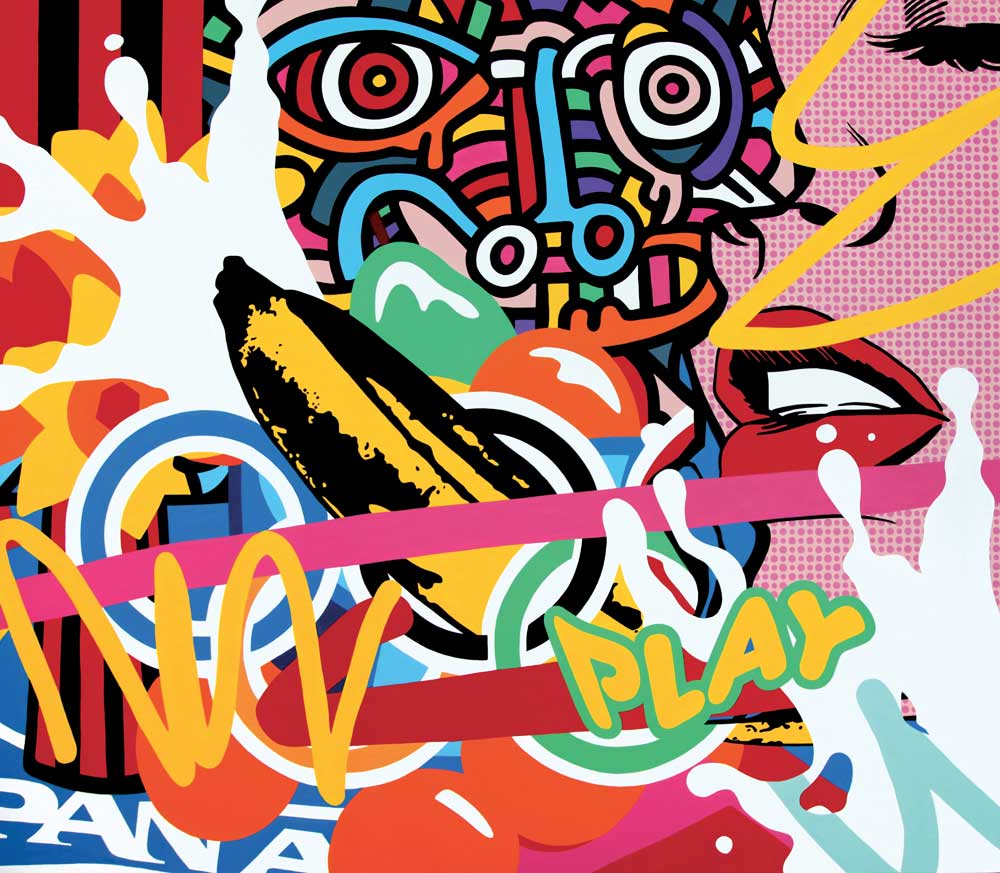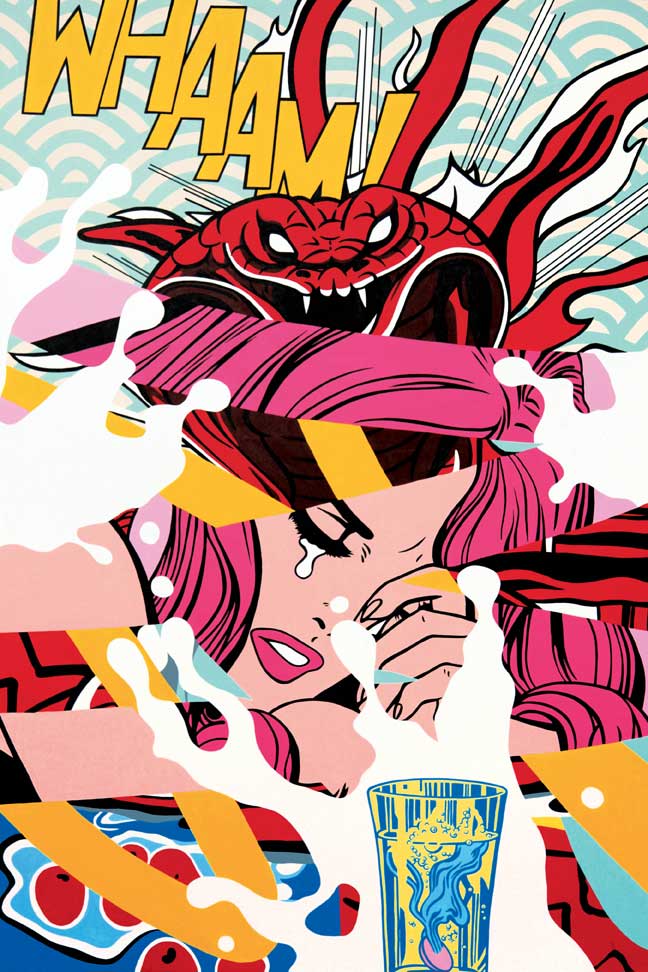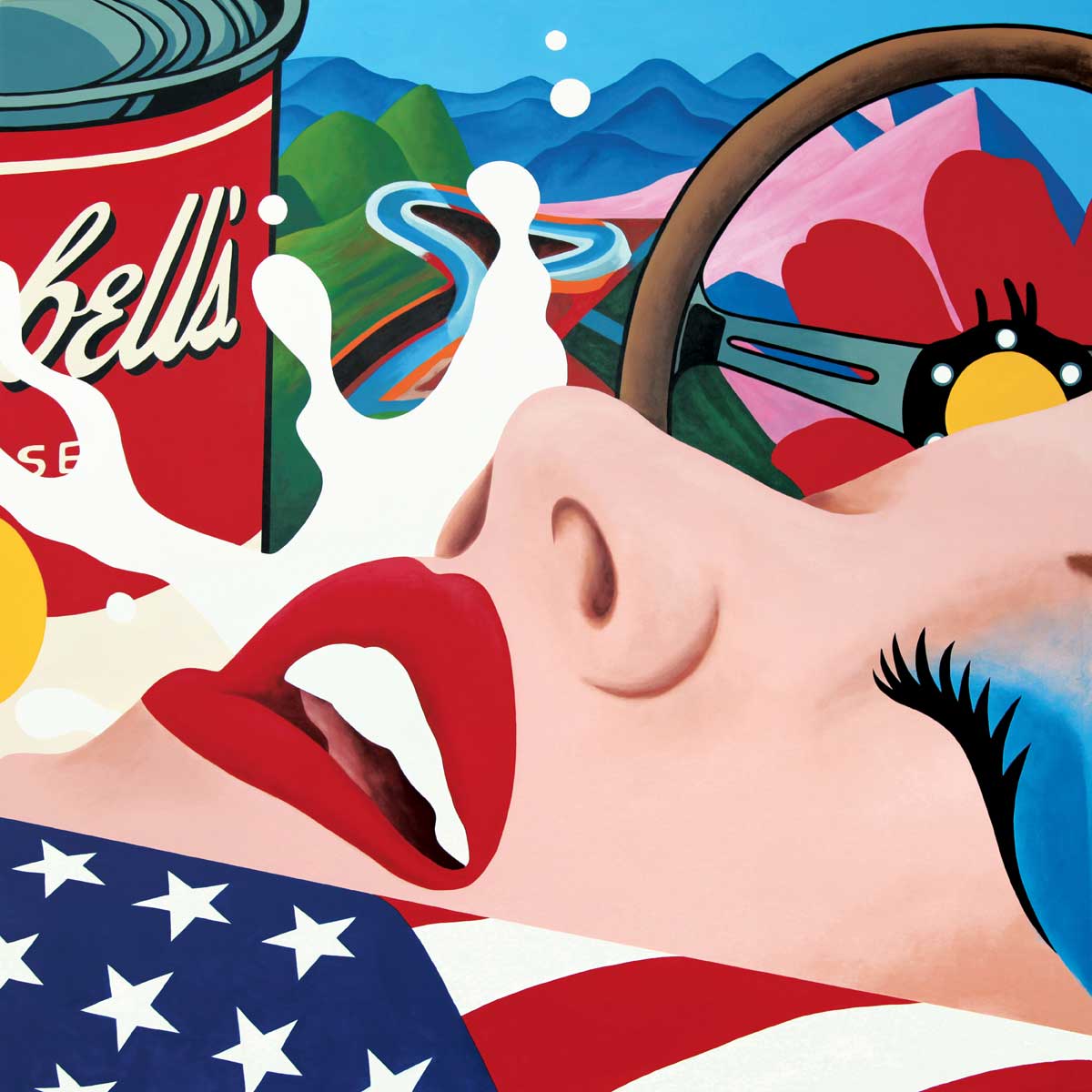« Reviews
Speedy Graphito: An American Story
Fabien Castanier Gallery - Miami
By Raisa Clavijo
Fabien Castanier Gallery opened its new space in the Wynwood Art District with “An American Story,” a solo exhibition by Speedy Graphito (Oliver Rizzo), who has developed an imagery inspired as much by popular culture as by the legacy of modernism.
Born in Paris, Rizzo graduated with honors from l’École Estienne in 1983. A year later, he started signing his works “Speedy Graphito.” In the 1980s, he was a notable figure within the street art movement in France alongside artists such as Jérôme Mesnager, Miss. Tic and Blek le Rat. Throughout his 30-year career, he has dabbled in media as diverse as painting, drawing, sculpture, photography, video and performance. Although his incursion into urban art is a notable element in his artistic career, Speedy Graphito prefers to define himself as a painter. His academic training and knowledge of the history of art have defined his style and creative strategy.

Speedy Graphito, Play, 2016, acrylic on canvas, 55” x 63.”All images are courtesy of the artist and Fabien Castanier Gallery.
The iconography that populates the works assembled in “An American Story” is based on continued dialogue with the history of painting through which the artist deconstructs and analyzes the role of the image in modernism and postmodernism. Since the beginning of his career, he has addressed with a critical look the symbols associated with rampant consumerism and advertising. This selection of pieces constitutes what the artist summarizes as “my art history” and is an amusing look at the legacy of modernism, above all those moments and figures in the history of art that have been relevant for the construction of his pictorial language. Many of the displayed works were created in Miami and arose as a result of his contact with the city, where he lived and worked for a time. In these works, Speedy Graphito immortalizes images that constitute icons of today’s visual culture, thanks to their frequent presence on the Internet.
Speedy Graphito’s principal strategy is based on appropriation and the rhetorical quote. He combines iconic elements associated with specific masters he considers integral to the history of art, comic book characters, pop artists and advertising images that have become cultural symbols of globalization. In his works, we see how fragments of the nudes of Tom Wesselmann share the scene with Homer Simpson, Super Mario and Pinocchio. In other pieces, bananas and Campbell’s soup cans popularized by Andy Warhol, as well as Warholian versions of Marilyn Monroe and Michael Jackson, pose next to Keith Haring characters, the labyrinthine calligraphy of street graffiti, fragments of the works of Lichtenstein and the Apple logo. At the same time, on other canvases, the models of Wesselmann rest their exuberant curves in landscapes that appear to have escaped from the paintings of Matisse and van Gogh. Speedy Graphito’s works constitute a revaluing of painting and mastery while at the same time also revaluing elements traditionally considered “lowbrow” but that have very strong roots in present-day culture. The optimistic smiles of the characters in his works hide a criticism of the social system, calling attention to the accumulation of material objects, the existential vacuum and the cult of the ego, all traits that characterize human behavior today.
Speedy Graphito’s work has been exhibited in many major European museums and centers of contemporary art. Through the headquarters of Fabien Castanier Gallery in Los Angeles, he has developed a strong presence in the American art scene over the last six years. Parallel to the exhibition in Miami, Le Musée du Touquet-Paris-Plage presented his first retrospective, “Un art de vivre,” which assembled his works from the past 30 years, including the famous poster for La Ruée vers l’art (1985) commissioned by France’s Ministry of Culture. The retrospective, which was open to the public until May 21, ended with a selection of works from his latest series, “Mon histoire de l’art” (my art history).
(February 19 - April 30, 2017)
Filed Under: Reviews





































Leave a Reply
You must be logged in to post a comment.